Planning a trip to Olympic can feel confusing – trust me, I’ve been there.
With so many different ecosystems packed into one Washington State national park – lush rainforests, mountain peaks, alpine lakes, wild coastline – it’s hard to know where to start.
You might be wondering how many days you need, where to base yourself, how to time your visits to different areas, or even what to wear. And with weather, road closures, and crowds to factor in, it’s easy to get overwhelmed.
That’s where I come in.
I’ve spent a lot of time in Olympic National Park. I’ve figured out what makes a visit here unforgettable – and what can quietly sabotage your experience.
This is best for anyone planning their first Olympic trip and wanting real, practical tips to make the most of it. You love nature, you want your time to feel well-spent, and you’re hoping to see the highlights without feeling rushed or lost.
These tips for visiting Olympic National Park are based on what I’ve learned from trial, error, and pure exploration – so you can skip the guesswork and get straight to the good stuff.
Let’s take a look at what’ll make your Olympic adventure smoother, better, and uniquely yours.
Watch these 12 tips for visiting Olympic National Park on video:
🔔 You can also watch this video on YouTube directly (opens in new tab).
🎙️ Or listen as a podcast:
🛏️TOP HOTEL IN NEARBY FORKS: Check availability now
🛏️TOP HOTEL IN PORT ANGELES: Check availability now
🚘FIND THE CHEAPEST CAR RENTAL: Search Discover Cars for the best deals
✈️FIND THE CHEAPEST FLIGHTS: Search Skyscanner for the best deals
🧳GET TRAVEL INSURANCE: Get insured with Travelex before you go
📱TAKE AN AUDIO TOUR: Buy an audio tour now
Table of Contents
12. Check the tides before visiting the beaches
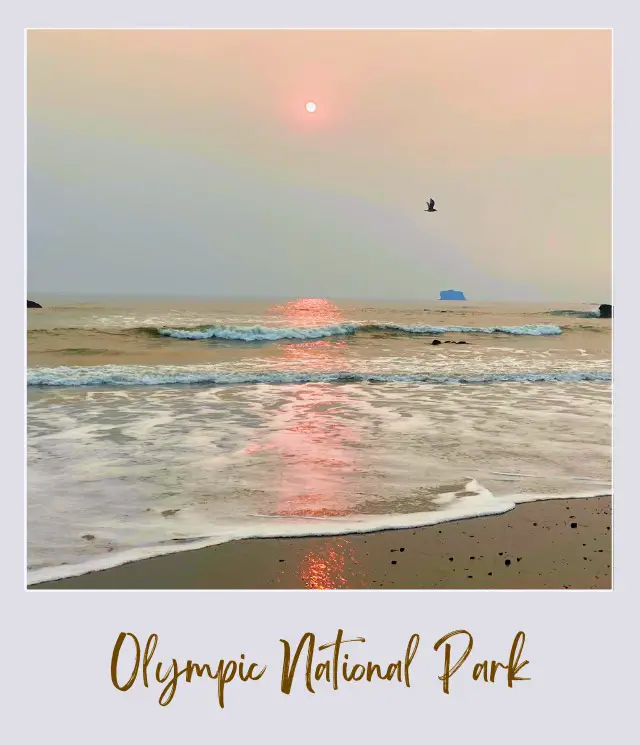
When planning a trip to Olympic National Park’s stunning beaches, the rhythm of the tides should guide your schedule.
The intertidal zones are best explored at low tide when the retreating water reveals tide pools and offshore sea stacks. At low tide, the beaches are exposed and rock pools are filled with green anemones, purple and orange sea stars, mollusks, hermit crabs, and more. Low tides can also expose passages to intriguing areas that are inaccessible at other times, such as the Hole-in-the-Wall at Rialto Beach.
To ensure you get the most out of your coastal visit, check the local tide charts for places like Rialto Beach or Kalaloch Beach 4. Aim to visit during a falling tide, which will give you the safest and most extensive access to these marine wonderlands. Negative tides are best, but any low tide is fine.
Remember that high tide can cut off these areas, so plan your return trip accordingly to avoid being stranded. The National Park Service provides tide charts, or you can find them online for the most accurate planning.
The most reliable tide chart is on the NOAA tide prediction website.
➡️ READ MORE: Best Tidepooling in Olympic National Park
Subscribe to daily national parks planning tips, travel inspiration and trip ideas and I’ll send you a free PDF of this Guide:
12 Tips for Visiting Olympic National Park
11. Pack layers for changing weather conditions
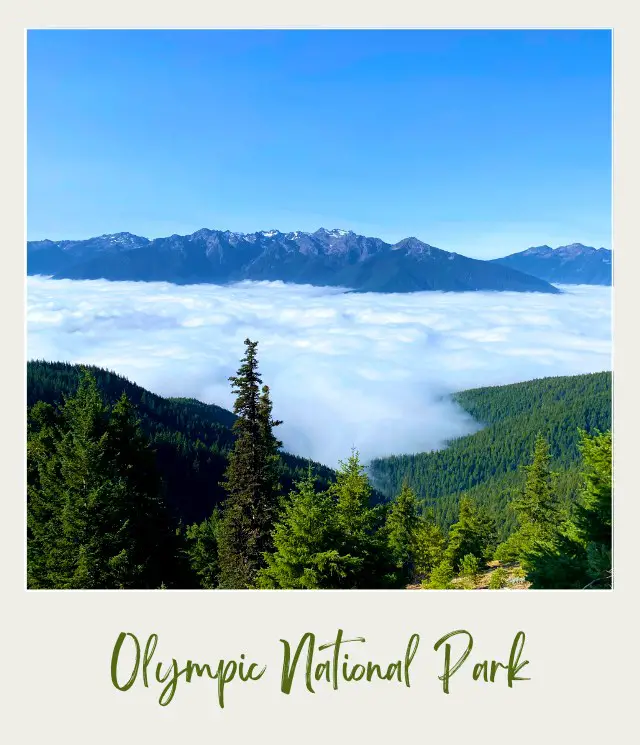
Olympic National Park is a place where the weather can shift dramatically, even within a single day. Even during the peak summer season, a sunny morning can quickly turn into a chilly, windy, or rainy afternoon.
To stay comfortable and enjoy your explorations to the fullest, it’s essential to dress in layers. Start with a moisture-wicking base layer, add an insulating layer like a fleece or down jacket, and top it off with a waterproof and windproof shell.
This layering strategy will serve you well whether you’re hiking in the alpine areas of Hurricane Ridge, wandering through the misty Hoh Rain Forest, or strolling along the park’s rugged coastline. Don’t forget to include a hat and gloves in your pack, as the higher elevations can be quite cool, even in summer.
➡️ Check my Packing List for Olympic National Park to make sure you have everything you need for your trip.
10. Expect drive times to be longer than you think
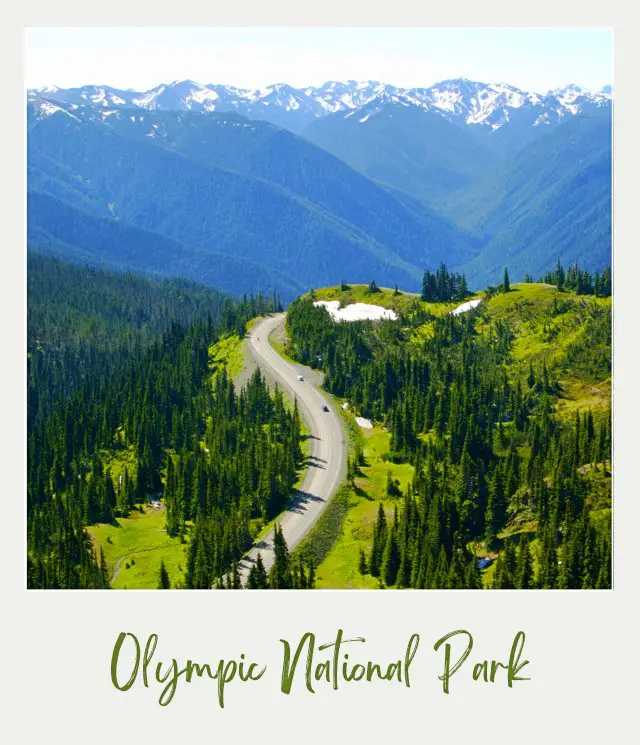
Olympic National Park is big. Navigating the park’s vast and diverse landscape means spending a fair amount of time on the road.
When planning your daily schedule, consider the time you’ll need to move between different park areas. For example, driving from the Elwha Valley to the Hoh Rain Forest could take several hours. This understanding will help you manage your expectations and allow you to fully immerse yourself in the experiences each unique location within the park has to offer without feeling rushed.
The park’s size and the winding nature of mountain roads can make drive times longer than what you might anticipate based on distance alone. Factor in stops for road works, scenic views, wildlife crossings, and the occasional slow-moving vehicle, and you’ll understand why it’s wise to add extra time to your travel estimates.
9. Get through the entrance stations early
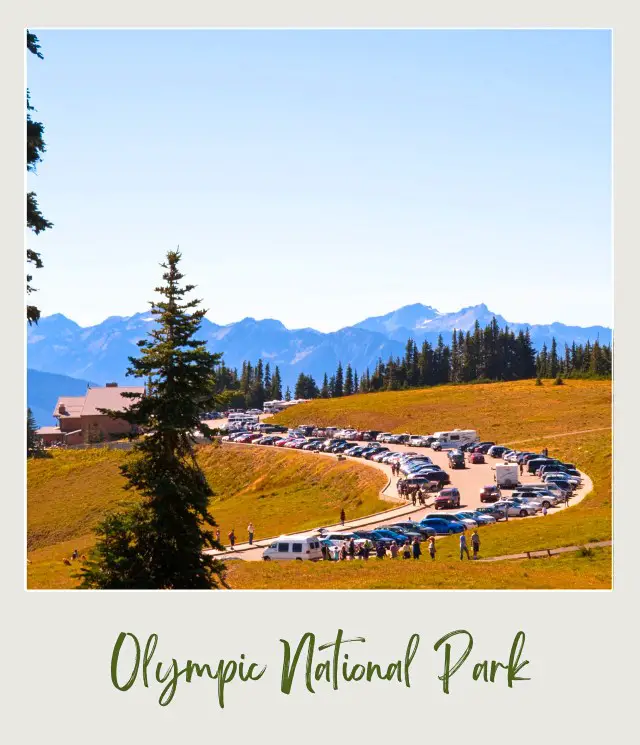
Arriving early at Olympic National Park is more than just a tip for beating the crowds — it’s a strategy for ensuring entry.
During the summer months, entrance stations, such as those at Hurricane Ridge and Hoh Rain Forest, can become choke points as parking lots fill up. By around 8:00 AM, the park service may restrict access, only allowing new vehicles in as others leave. To avoid waiting in long lines or facing the possibility of delayed entry, aim to be at the entrance stations as they open.
This early start not only secures your spot but also enhances your experience with quieter trails and the soft, golden light of morning, perfect for photography. With popular spots like Hurricane Ridge offering limited parking, an early arrival can make the difference between a day spent exploring the peaks and a day spent idling in your car.
8. Make campground or lodging reservations in advance
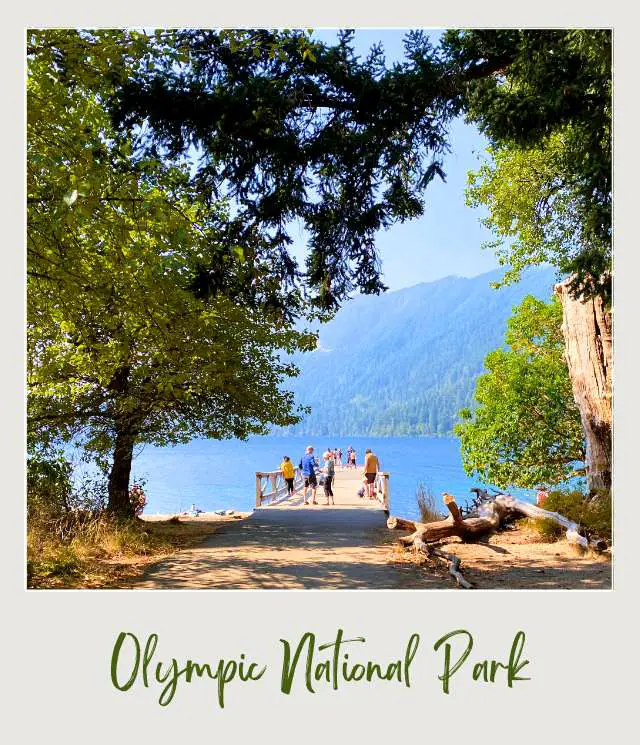
The window of opportunity to visit Olympic National Park is relatively short due to its northern location and the tendency for wet, cold winters. As a result, the park is incredibly popular during the summer months when the weather is most accommodating.
To avoid the disappointment of sold-out campgrounds and lodgings, book your accommodations well in advance of your trip. This is especially important if you’re planning to stay in sought-after locations like the Sol Duc Hot Springs Resort or the Lake Crescent Lodge.
Reservations can often be made up to six months in advance, and for some of the park’s prime spots, they fill up almost as quickly. Planning ahead not only guarantees you a place to stay but also allows you to choose the most convenient locations for the activities you’re most interested in, whether that’s hiking, wildlife watching, or simply enjoying the tranquility of the park.
7. Before you drive up to Hurricane Ridge, check their webcam
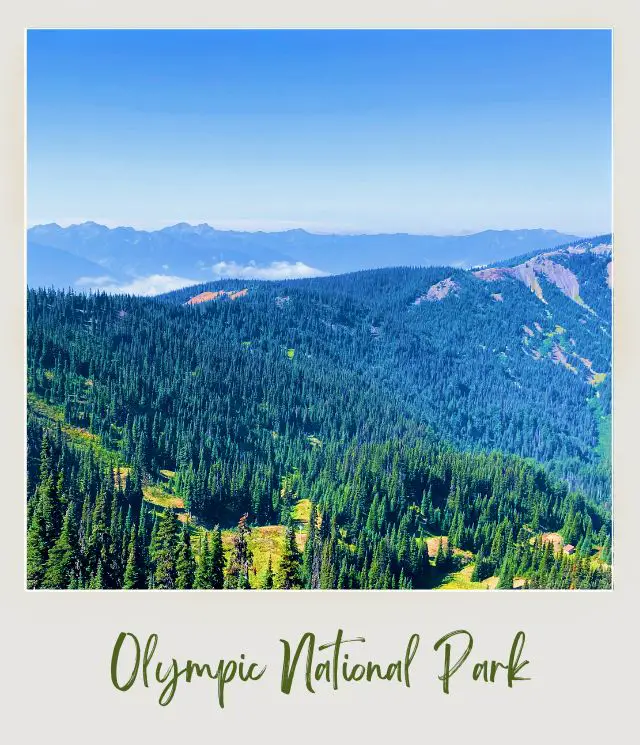
One of the park’s crown jewels, Hurricane Ridge, offers breathtaking panoramic views of the Olympic Mountains and beyond. However, the weather at the ridge can differ significantly from that at the base in Port Angeles.
Before making the ascent, take a moment to check the Hurricane Ridge webcam. This live feed will show you the current conditions at the top, which can be clear and sunny even when clouds shroud the lower elevations.
The webcam is an invaluable tool for ensuring that your trip up the mountain won’t be in vain. After all, the main draw of Hurricane Ridge is the stunning views, which can be completely obscured by fog or clouds. By checking the webcam, you can decide whether to head up for clear views or perhaps alter your plans to take advantage of better weather elsewhere in the park.
➡️ READ MORE: Guide to Visiting Hurricane Ridge
6. Check for seasonal road closures and trail conditions before heading out
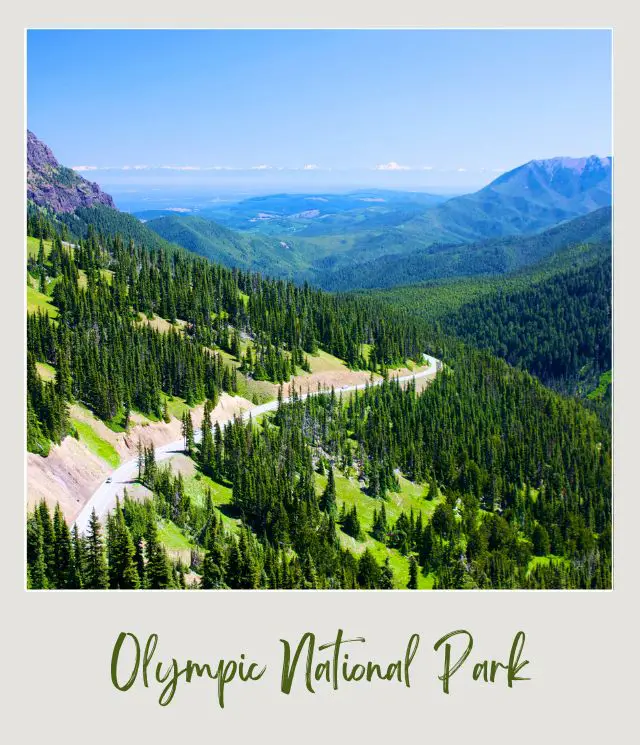
Olympic National Park’s vast and varied terrain means that road and trail conditions can change with the seasons, and sometimes even overnight due to weather events or maintenance. Before you set out for the day, it’s wise to check the park’s official website or contact the visitor center for the latest updates on road closures and trail conditions. This can save you from the frustration of arriving at a trailhead only to find it closed or impassable.
Seasonal road closures, particularly in the higher elevations, can limit access to certain parts of the park, while trail maintenance or environmental protection efforts can close or reroute trails. Staying informed will help you make the most of your time and ensure that you’re not putting yourself in a potentially unsafe situation.
5. Allow enough time to see all the main ecosystems in the park
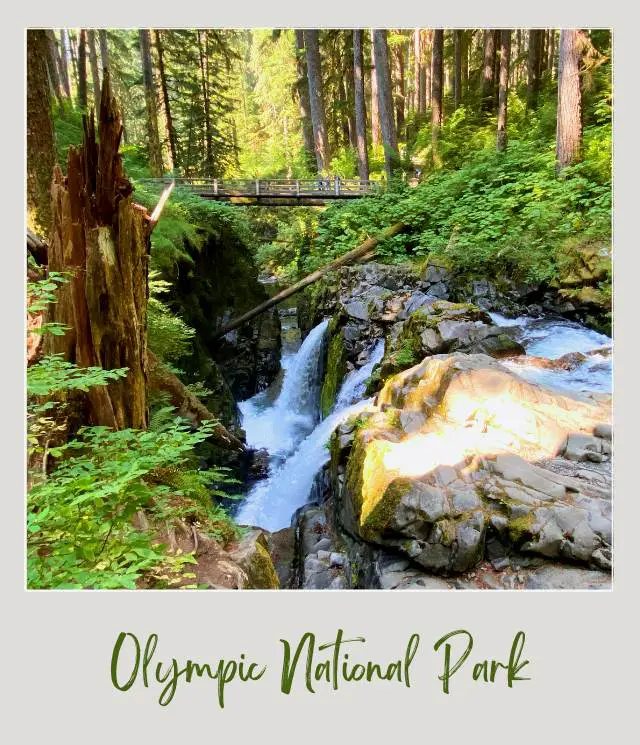
Olympic National Park is unique in that it encompasses four distinct ecosystems: the rugged Pacific coastline, the temperate rainforests, the subalpine mountains and wildflower meadows, and the drier lowland forests of the eastern slopes. To truly appreciate the diversity of the park, plan to spend enough time to visit each of these areas.
The Hoh Rain Forest and Quinault Rainforest offer lush, green canopies and are prime examples of the temperate rainforest ecosystem. These areas are often shrouded in mist and are home to some of the largest trees in the world.
The alpine meadows of Hurricane Ridge provide a stark contrast with their colorful wildflowers and sweeping mountain views.
The coastlines, with their tide pools and rugged beaches, offer a completely different experience, with off-shore sea stacks, enormous driftwood, and frequent mist.
Finally, there are the lowland forests and lakes. Highlights include Lake Crescent, with water sports, beautiful hikes and waterfalls, and the Sol Duc Valley, where you can soak in hot springs and visit the most famous waterfall in the national park.
Each ecosystem offers distinct experiences and photo opportunities, so give yourself the time to explore and appreciate each one.
4. Don’t miss the Quinault area
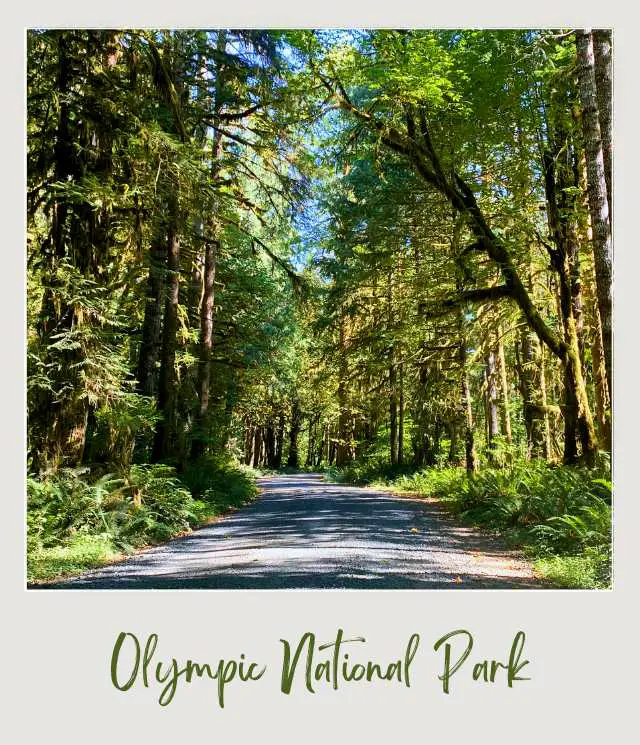
Often overlooked in favor of the more famous Hoh Rain Forest, the Quinault area is a hidden gem within Olympic National Park.
Known as the “Valley of the Giants,” this part of the park is home to some of the largest specimens of Sitka spruce, western hemlock, and Douglas fir. The Quinault Rainforest offers a serene and less crowded alternative for visitors seeking the tranquility of ancient forests.
The area around Lake Quinault provides a picturesque setting for a variety of activities, including hiking, kayaking, and fishing.
The Quinault Rainforest Loop Drive is a particularly scenic route that allows you to enjoy the majesty of the rainforest from the comfort of your vehicle, with opportunities to stop and explore along the way. Whether you’re interested in a leisurely drive or an adventurous hike, the Quinault area offers a chance to witness the park’s remarkable biodiversity without the crowds found in other areas.
3. Stay in two locations
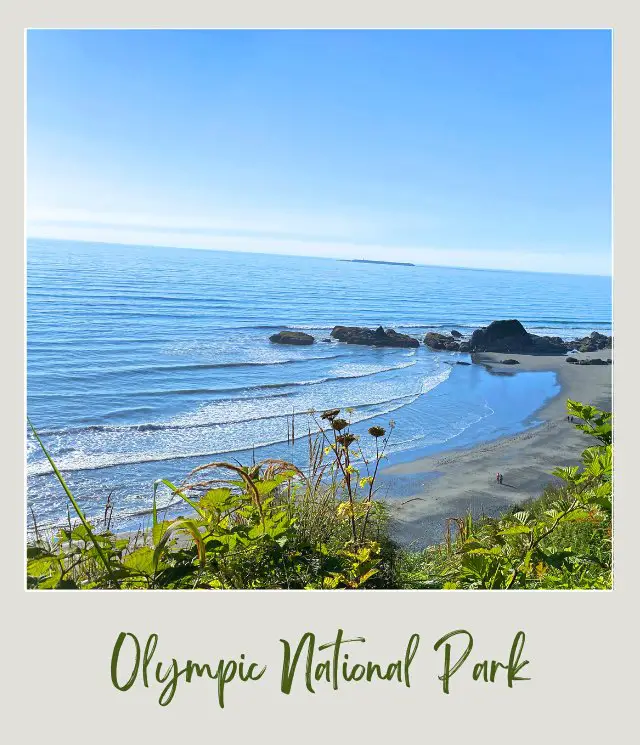
Did I mention that Olympic is huge! To cut down on all the driving, I recommend staying in two different places if you’re visiting for more than a day.
Port Angeles makes a great base for Hurricane Ridge, Lake Crescent and the Sol Duc valley. Forks is a good location for the beaches and the Hoh Rainforest. If you’re also visiting Quinault, you could stay around Lake Quinault or Forks or the Kalaloch area.
I know that moving accommodations can be a pain, but this will cut down driving and make it easier to get into the park early.
2. Book ferries in advance
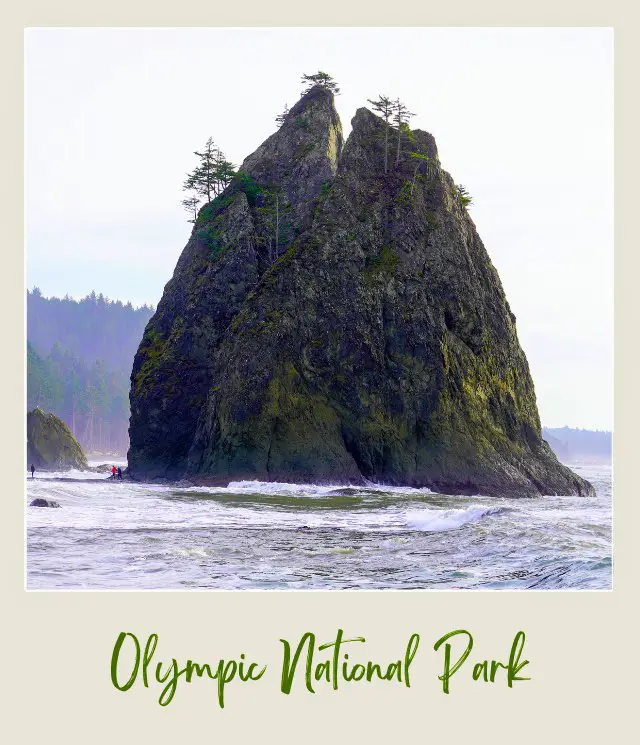
You don’t need to take a ferry to get into or around the national park, but you may end up taking one (or more) to get to or from the park. If you have to take one, don’t wait until you get there to book it, as they frequently fill up, especially in the busy summer months.
If you’re coming in via SEA airport, the Seattle-Bremerton ferry, Seattle -Bainbridge ferry and Edmonds-Kingston ferry don’t take reservations. However, the Port Townsend, Anacortes, Friday Harbor, Coupeville, Lopez Island, Orcas Island, Shaw Island, and Sidney, BC ferries all recommend / require reservations.
Check the Washington State Ferries website for schedules and to make reservations.
1. Have a Detailed (& Flexible) Plan
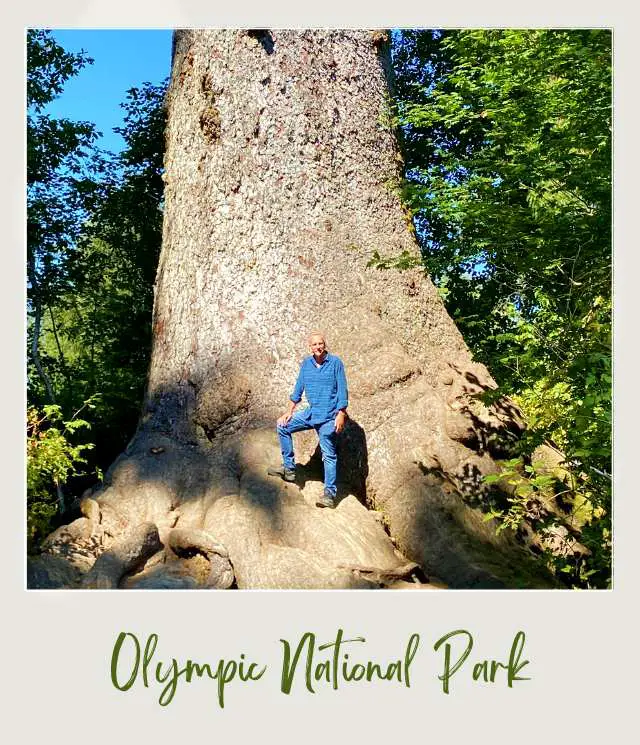
While Olympic National Park offers a wealth of natural beauty and adventure, planning a trip to encompass all its highlights can be daunting. To help you navigate this diverse park, consider purchasing one of my detailed 1, 2, 3, and 4-day itineraries.
They provide you with an hour-by-hour plan that caters to different activity levels and interests, complete with tips for visiting, important information, hike descriptions, driving directions, and more.
The goal of these itineraries is to remove the stress of planning and allow you to fully enjoy your visit. They are designed to ensure you don’t miss out on any of the park’s wonders and to provide you with the knowledge to navigate the park efficiently.
➡️ Read more about the Olympic National Park Itineraries I offer.
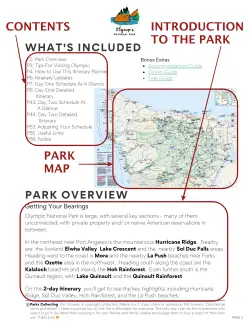
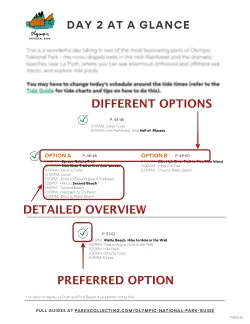
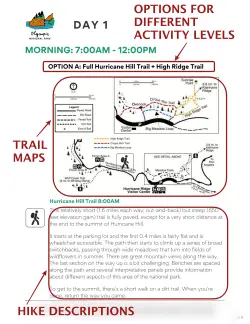

Enjoy your trip to Olympic National Park.
More Planning Resources for Olympic National Park
⭐ Olympic National Park Guide
⭐ Olympic National Park Itinerary
⭐ 7 Mistakes to Avoid in Olympic
⭐ How Many Days in Olympic National Park?
⭐ Packing List for Olympic National Park
⭐ Best Things to Do in Olympic National Park
⭐ Best Views In Olympic National Park
⭐ Best Waterfalls in Olympic National Park
⭐ Best Hikes in Olympic National Park
⭐ Visiting Hurricane Ridge: Complete Guide
⭐ Best Hurricane Ridge Hikes
🔹 Hurricane Hill Trail Guide
🔹 Cirque Rim Trail Guide
🔹 High Ridge Trail to Sunrise Point Trail Guide
⭐ Best Hikes Near Lake Crescent
🔹 Marymere Falls Trail Guide
⭐ Best Sol Duc Hikes
🔹 Sol Duc Falls Trail Guide
🔹 Ancient Groves Nature Trail Guide
🔹 Sol Duc Salmon Cascades
⭐ Best Hoh Rainforest Hikes
🔹 Hall of Mosses Trail Guide
🔹 The Hoh River Trail Guide
⭐ Best Olympic National Park Beaches
⭐ Best Tide Pools in Olympic National Park
🔹 Rialto Beach Guide
🔹 Kalaloch Beach 4 Guide
🔹 Third Beach Guide
🔹 Second Beach Guide
🔹 The Tree Of Life
⭐ Best Lake Quinault Hikes
🔹 Maple Glade & Kestner Homestead Trails
⭐ Lake Quinault Loop Drive: A Complete Guide
⭐ How To Get to Olympic National Park
⭐ All The Airports Near Olympic National Park
⭐ The Closest Airport to Olympic National Park
⭐ The Best Time To Visit Olympic National Park
⭐ What To Expect Throughout the Year
⭐ 10 Fun Facts About Olympic National Park
Do you have any other ideas for how to plan a trip to Olympic National Park? I’d love to hear about them. Join my private Facebook group National Parks Collectors and comment and let me know (you can also pick up extra planning tips, share your photos and stories with other national park lovers and more).
Subscribe to daily national parks planning tips, travel inspiration and trip ideas and I’ll send you a free PDF of this Guide:
12 Tips for Visiting Olympic National Park
If you liked this article about the best way to visit Olympic National Park, Pin It to your Olympic National Park board!
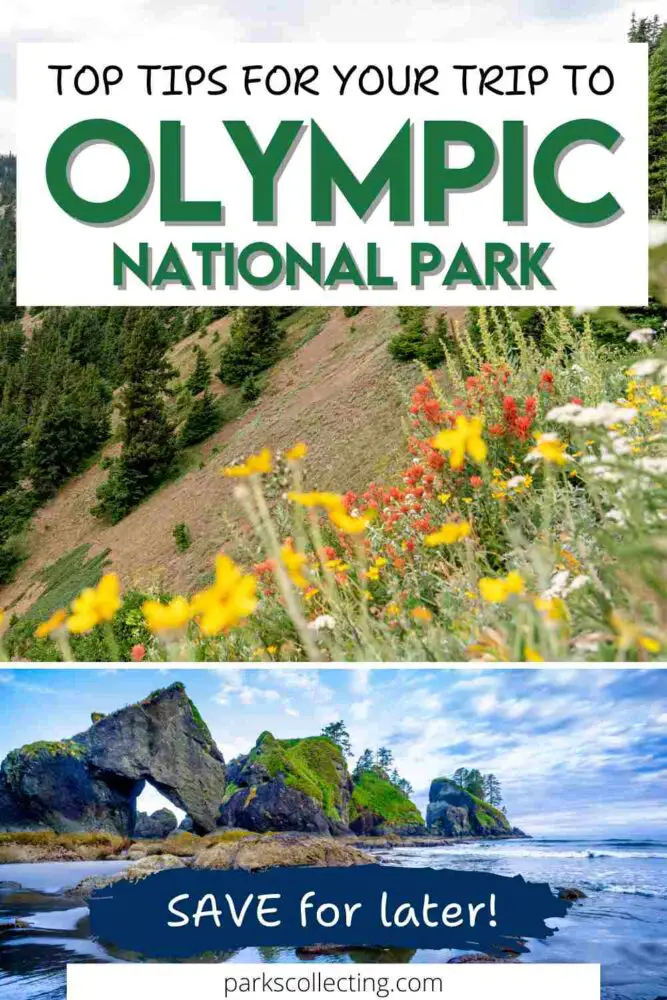
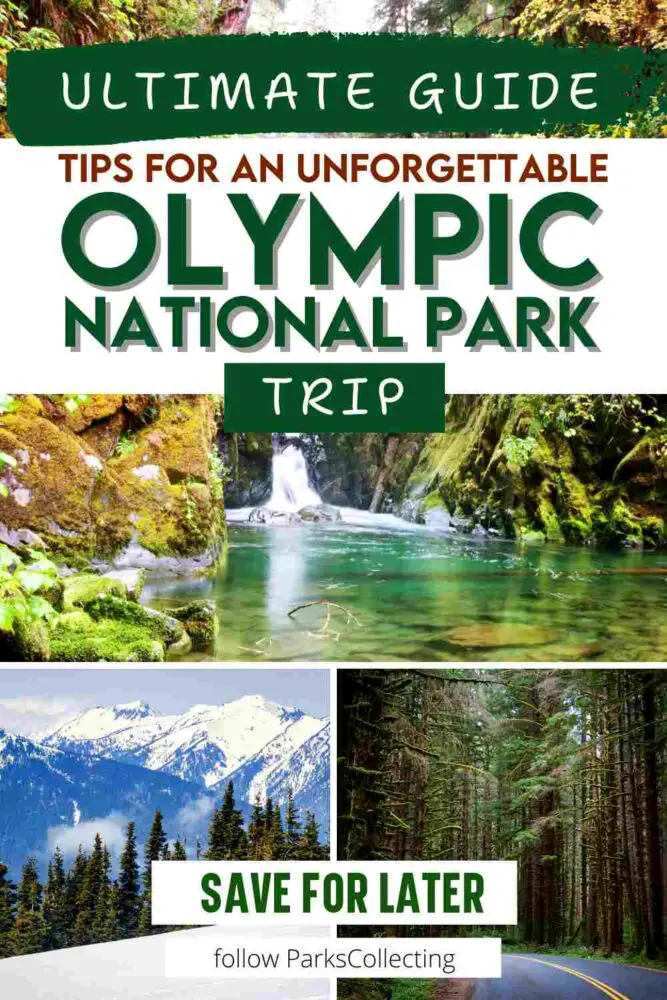
💡 Are you just starting to think about taking a national parks trip? Get Inspiration
‼️ Are you looking for helpful tips for visiting US national parks? Read articles that share useful tips on a range of national-park related issues
💻 Are you starting to plan a trip to Olympic National Park? Read my Guide to Olympic National Park
📋 Do you want a ready-made super detailed plan for your trip to Olympic? Get a detailed 1 – 4-day Olympic National Park Itinerary
💲 Are you ready to book your trip? Use these Planning and Booking Resources
📖 Do you want to read a book about US national parks? Check out my Recommended Reading Lists
About the Author
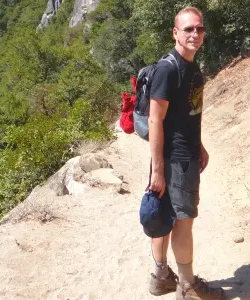
James Ian is a national park, camping and hiking expert.
He has dedicated his life to travel, visiting more than 80 countries, all 7 continents and most of the national parks in the United States. With over 35 years experience in the travel industry, James has worked on cruise ships, at resorts and hotels, and as a travel planner who’s helped hundreds of people plan successful trips to US national parks.
Based on his experience visiting our national parks multiple times, in-depth research and expertise as a travel planner, James has published detailed itineraries for many of the major national parks in the US. These itineraries, as well as in-depth park guides, and other resources will help you have your own incredible trip to US national parks without stress and hassle.
As a national park expert, James has contributed to many publications, including USA Today, Newsweek, Time Business News, Savoteur, Best Trip, and Wired.
I’m a member of the Amazon Services LLC Associates Program. As an Amazon Associate I earn from qualifying purchases.
